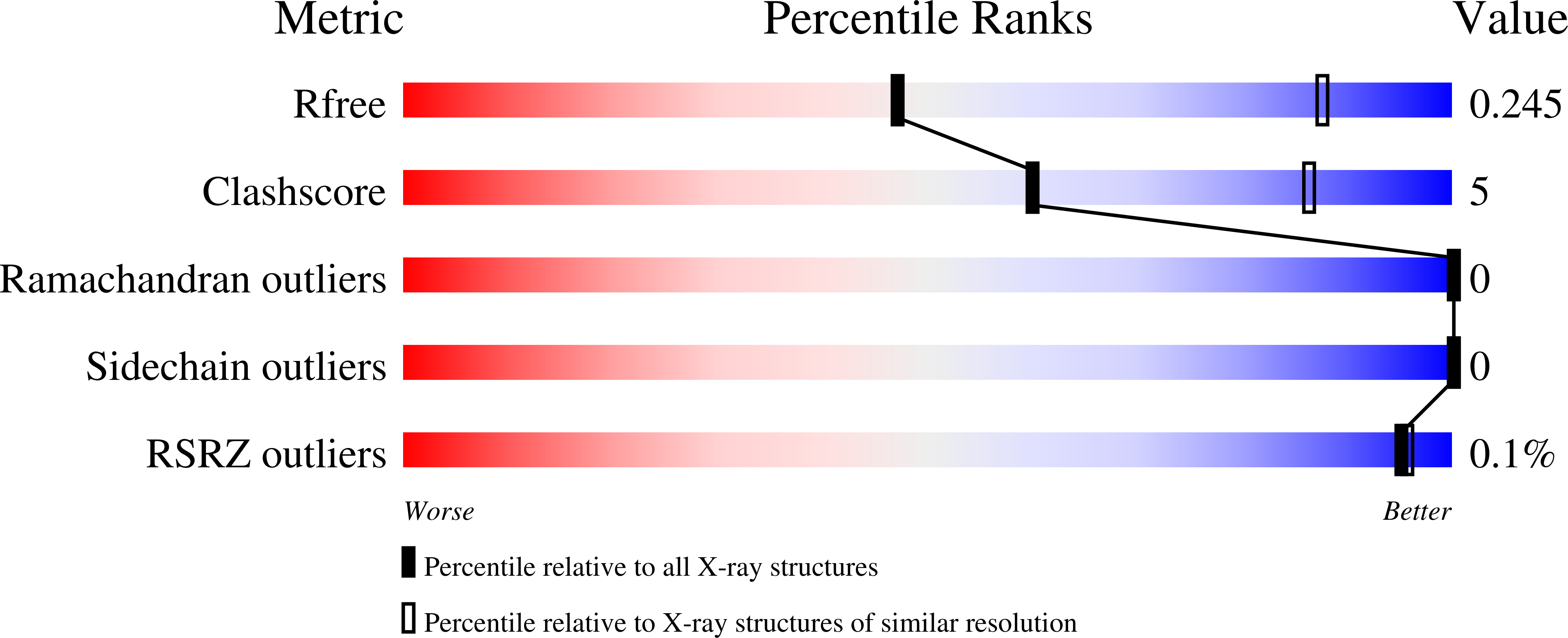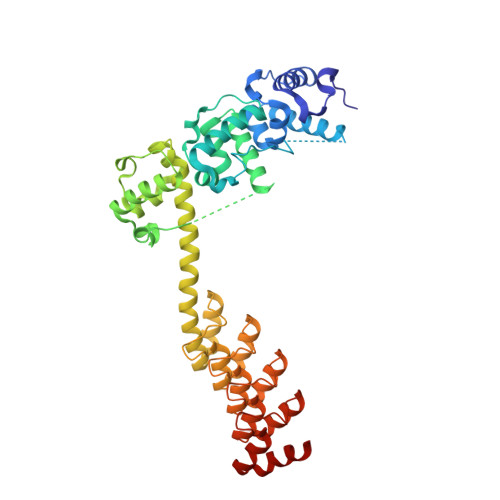Crystals of TELSAM-target protein fusions that exhibit minimal crystal contacts and lack direct inter-TELSAM contacts.
Nawarathnage, S., Soleimani, S., Mathis, M.H., Bezzant, B.D., Ramirez, D.T., Gajjar, P., Bunn, D.R., Stewart, C., Smith, T., Pedroza Romo, M.J., Brown, S., Doukov, T., Moody, J.D.(2022) Open Biol 12: 210271-210271
- PubMed: 35232248
- DOI: https://doi.org/10.1098/rsob.210271
- Primary Citation of Related Structures:
7N1O, 7N2B - PubMed Abstract:
While conducting pilot studies into the usefulness of fusion to TELSAM polymers as a potential protein crystallization strategy, we observed novel properties in crystals of two TELSAM-target protein fusions, as follows. (i) A TELSAM-target protein fusion can crystallize more rapidly and with greater propensity than the same target protein alone. (ii) TELSAM-target protein fusions can be crystallized at low protein concentrations. This unprecedented observation suggests a route to crystallize proteins that can only be produced in microgram amounts. (iii) The TELSAM polymers themselves need not directly contact one another in the crystal lattice in order to form well-diffracting crystals. This novel observation is important because it suggests that TELSAM may be able to crystallize target proteins too large to allow direct inter-polymer contacts. (iv) Flexible TELSAM-target protein linkers can allow target proteins to find productive binding modes against the TELSAM polymer. (v) TELSAM polymers can adjust their helical rise to allow fused target proteins to make productive crystal contacts. (vi). Fusion to TELSAM polymers can stabilize weak inter-target protein crystal contacts. We report features of these TELSAM-target protein crystal structures and outline future work needed to validate TELSAM as a crystallization chaperone and determine best practices for its use.
Organizational Affiliation:
Department of Chemistry and Biochemistry, Brigham Young University, Provo, UT, USA.














